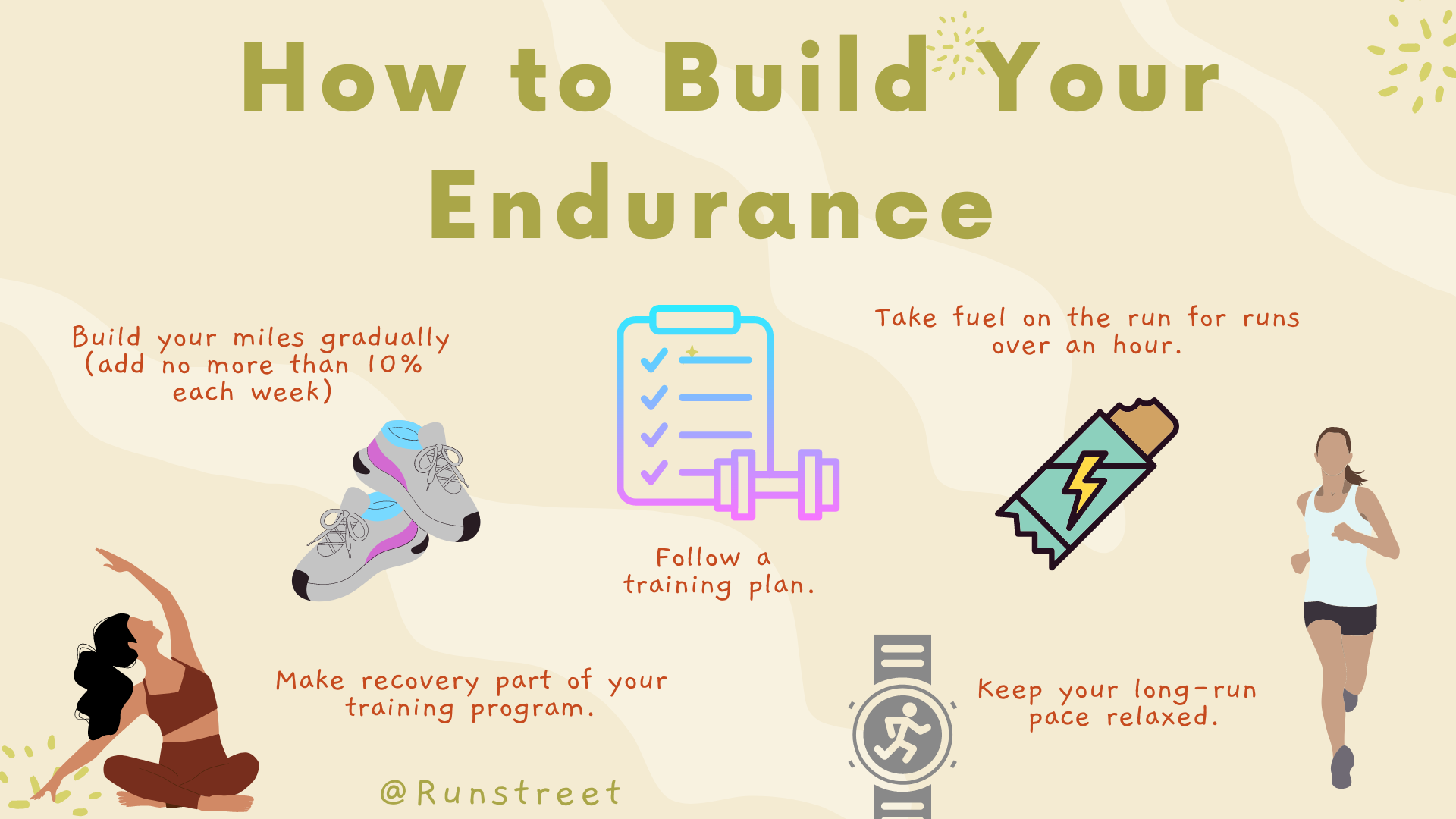How to Build Endurance Running
Photo by Marques Jackson Photography.
By Marnie Kunz
Whether you are a beginning runner training for your first 5K or you want to run your first marathon, you may be wondering how to build endurance running. The good news is that running farther - maybe even 2 or 3 times farther than you are running currently — is not as hard as it sounds. I’ve coached runners who have never run more than 5K to complete marathons and helped people who have never run to compete in their first 5Ks. The key to building endurance is to follow some specific training principles that will help you build your stamina gradually. Armed with the right coaching techniques, you can build up to running your dream distance. Here’s how:
10 Tips to Build Endurance Running
Have a Plan
Running without a training plan is like going someplace without a map - you may get lucky and somehow make it, but you will get there much faster (and less stressed!) if you have a plan.
Whether you get a beginner’s 5K training plan, hire a running coach to design a customized running program for you, or make your own, you will find it much easier to meet your endurance goals with a training plan. A training plan will help you add miles to your weekly long run and make progress toward your long distance running goal.
Without a training plan, it’s easy to get stuck in a rut and run the same distance and pace every day. A running program will keep you on track to keep pushing and building endurance to meet your goals.
Follow the 10% Rule
Follow the training principle of progressive overload, where you increase your mileage gradually. As you add miles to your runs, do not add more than 10% of miles per week. According to the National Academy of Sports Medicine, the Principle of Progression states that you can increase your time or intensity when training by 10% or less each week to allow for a gradual adaptation while minimizing your risk of injury.
So if you run 20 miles one week, for instance, you can increase your weekly miles by 10% or 2.2 miles to total 22.2 miles the next week. Similarly, you should only increase your long run by 10 percent a week. This helps prevent injuries from overtraining, which are one the the biggest obstacles for runners.
Slow Your Roll
Sometimes I coach runners who think they have to run every long run at their race pace. But for the majority of people, you don’t need to go fast for your long runs. If your long runs feel more and more difficult, you may need to slow down your pace. Your long run should be at a relaxed pace, one at which you could keep up a conversation. You can do speed work on your speed work days, but your long run is purely for building endurance so don’t worry if your pace is slower than normal. The key is to keep going.
Stay Fueled
It’s important to stay hydrated on your long runs with water and electrolytes. If you are running for more than an hour, you will need some sort of fuel for energy as well. Running gels and gummies give your body a boost of glucose that it needs for energy after depleting your body’s reserves during an hour of aerobic exercise. Try out different running energy chews until you find one that works well for you during long runs. I personally like Honey Stingers and Clif Bloks, and for longer runs, I sometimes eat peanut butter, banana, and honey sandwiches.
Read the recommended fueling instructions on your running energy source and follow directions, usually taking the gel or chew every 45 minutes to an hour and usually with a few sips of water.
For hydration and electrolytes, try popping a Nuun or other electrolyte tablet into your water bottle. This gives your body electrolytes that get depleted during endurance workouts without the added sugars and artificial flavors of traditional sports drinks.
Related Post: What to Eat for Running: Tips from a Dietitian
Schedule Your Long Runs
This goes along with following a training plan. Scheduling your long runs helps keep you accountable and on track with your workouts. Long runs can take a lot of time and energy, sometimes even leaving you tired for the rest of the day, so take this into account and schedule your long runs on days when you don’t have work or other big obligations.
Run with a Partner
Running with a training partner, friend, running coach, or your dog can be great for boosting morale on your long runs. Even if your training partner joins you for the last few miles of a long run, this may be just what you need to keep pushing forward and complete those last miles.
Pick a Race Goal
Pick an endurance race — such as a half marathon or marathon that you want to run — and sign up for it. This will give your training a focus and help you stay motivated on those tough days when life seems to be full of obstacles.
Keep Perspective
Speaking of obstacles, it helps to be patient with yourself and don’t beat yourself up about one missed practice or one bad training day. We all have ups and downs with our training — even world champions experience off days and setbacks — so do what you need to do to take care of yourself and get back on track with your next workout.
Remember Your Why
Before you begin your training program, you should think about why you are running. What do you want to get out of your running — and your life? You may think about how running helps your mental or physical health or about a cause that you will be racing for and remember these things on those tough days where the weather is terrible, you just ate a tub of fries, or feel sluggish on the run. Remember the bigger picture of why you are here right now running.
Take Recovery Time
Rest and recovery are so important for runners, especially when you are building your mileage and doing long runs. Recovery time helps prevent injury and boosts your chances of being able to continue adding miles to your long runs. Take a rest day after your long runs to allow your body time to recuperate. Also, build some cross-training into your workout program so you have a physical and mental break from running while still improving your strength and fitness. Some recovery activities I recommend for people I coach include walking, yoga, and icing any sore areas after hard workouts. For more ideas, check out my 20 tips for better workout recovery.
Have you tried any of these tips for your long runs? What works best for you to build up your long run mileage? Tag Runstreet on Instagram to share your training with us and get cheered on. Happy running to you!😊
Related Posts: 7 Running Tips to Avoid Injury, How to Do a Tempo Run and Get Faster, NYC Marathon Tips from the Wolf Pack, How to Run with Your Dog
Marnie Kunz is a NASM-certified trainer and USATF- and RRCA-certified running coach, dog lover, Akita mom, and writer based in Brooklyn, NY.





